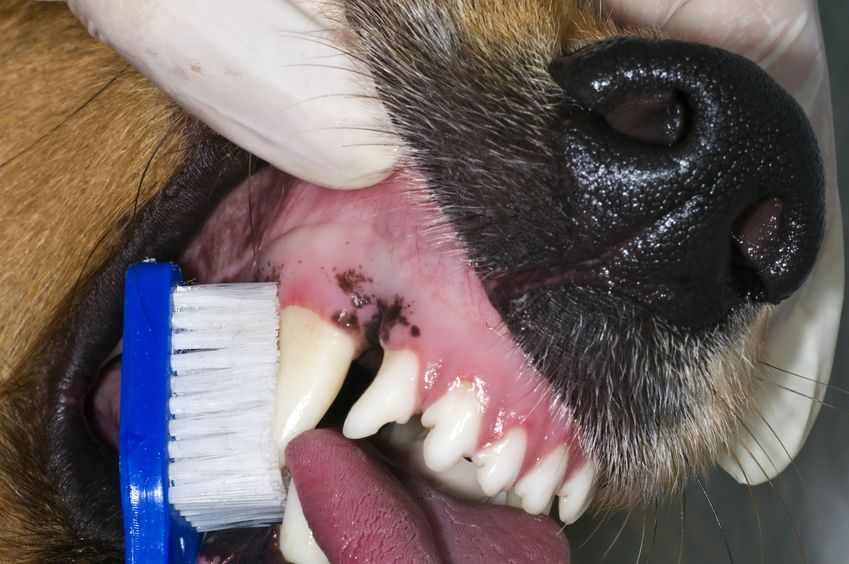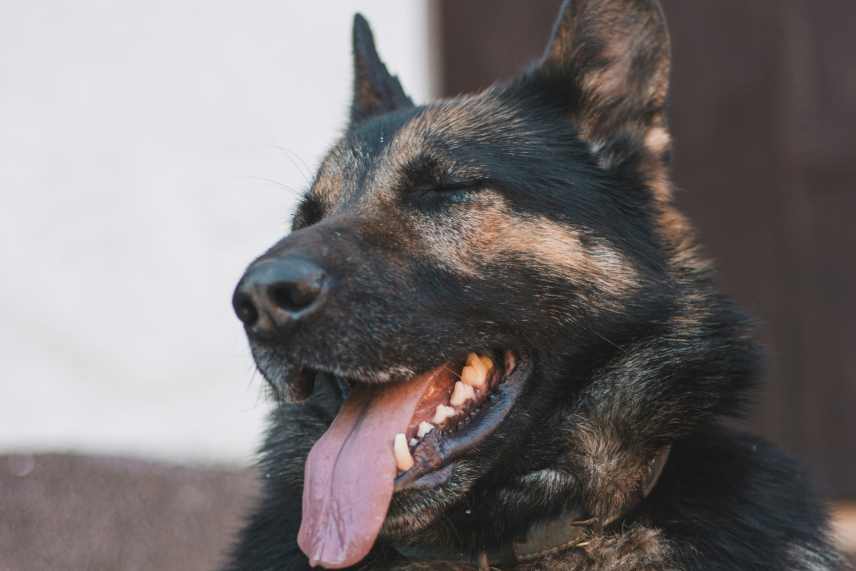Key Highlights
- Hanging Tongue Syndrome is a condition in which a dog’s tongue hangs out of their mouth, and it can be caused by genetic predispositions or severe dental disease.
- Dogs with this syndrome may have difficulty eating, experience cracking of the tongue, and have a protruding tongue.
- Veterinary help should be sought if any of these symptoms are present, as they can indicate underlying health issues.
- Treatment options for Hanging Tongue Syndrome include immediate care and management, as well as long-term solutions and preventative measures.
- Daily care tips for affected pets include providing plenty of water and monitoring and managing symptoms for any new changes.
Introduction
Hanging Tongue Syndrome is a condition that affects some dogs, causing their tongue to hang out of their mouth. While it may seem cute and endearing, this condition can actually be a sign of underlying health issues, especially in colder climates. In this blog, we will explore the causes, symptoms, and treatment options for Hanging Tongue Syndrome in dogs, including the importance of monitoring the color of their tongue and gums.
It is important to understand that Hanging Tongue Syndrome is not a normal occurrence in all dogs. It is more commonly seen in smaller and brachycephalic breeds of dogs, such as Pugs, due to genetic predispositions. However, other factors, such as severe dental disease, can also contribute to the development of this condition in toy breeds.
Identifying the symptoms of Hanging Tongue Syndrome is crucial for pet owners to ensure their dogs receive the necessary veterinary care. Difficulty eating, cracking of the tongue, and tongue protrusion are some recognizable signs of this condition. Knowing when to seek veterinary help is essential to address any health issues and provide the right medication for your dog.
In the following sections, we will delve deeper into the causes of Hanging Tongue Syndrome, including genetic predispositions and environmental factors. We will also explore the diagnostic approaches used by veterinarians to diagnose this condition and the treatment options available for affected dogs. Additionally, we will provide tips for daily care and management of dogs with Hanging Tongue Syndrome, as well as answer some frequently asked questions.

Understanding Hanging Tongue Syndrome
Hanging Tongue Syndrome is a condition that affects the oral cavity of dogs, causing their tongues to hang out of their mouths. It can be caused by genetic predispositions or other factors such as severe dental disease or overly large tongues, also known as macroglossia.
Understanding this syndrome is important for pet owners to recognize the symptoms and seek appropriate veterinary help. By gaining a better understanding of this condition and addressing any potential severe issues, we can provide better care and support for dogs affected by Hanging Tongue Syndrome.
Defining Hanging Tongue Syndrome in Pets
Hanging Tongue Syndrome, also known as tongue syndrome or hanging tongue, is a condition that affects dogs, causing their tongues to hang out of their mouths. This condition can be seen in various breeds, but it is more prevalent in smaller and brachycephalic (“smooshed” faced) breeds, such as Pugs.
In Hanging Tongue Syndrome, the tongue may quite literally be too large for the oral cavity, or breeding may have led to an abnormal jaw bone that doesn’t properly support it. Dogs with an overbite or underbite are more prone to developing this condition, especially as they age.
It is important to note that Hanging Tongue Syndrome is not a sign of anything else troublesome in most cases. However, severe dental disease can lead to the rotting of the lower teeth, resulting in a lack of support for the tongue. This can cause the tongue to protrude to either the side or out the front, a condition that is often seen in pets with missing teeth.
It is essential to get this condition checked out by a veterinarian to rule out any oral cancers or masses that may be causing the tongue to stick out. Now that you know what your dog’s tongue sticking out means, read up on what their ear position can tell you! Here are four possible reasons why your dog’s tongue may stick out and what they could indicate.
The Physiology Behind Hanging Tongue Syndrome
The physiology behind Hanging Tongue Syndrome involves a combination of factors such as dental disease, abnormal jaw bone structure, and the size of the tongue. In some cases, a dog’s tongue may be too large for its oral cavity, leading to it protruding out of the mouth. This can be caused by genetic predispositions or breeding practices that result in an abnormal jaw bone structure that does not properly support the tongue.
However, dental disease, specifically diseased teeth, can also contribute to Hanging Tongue Syndrome in dogs. Severe dental disease can lead to the rotting of the lower teeth, which can result in the loss of support for the tongue, and is often the only cause of Hanging Tongue Syndrome. As a result, the tongue may hang out of the mouth to either the side or the front. It is important to consult with a veterinarian to determine the underlying cause of Hanging Tongue Syndrome in each individual case.
Identifying Symptoms of Hanging Tongue Syndrome
Hanging Tongue Syndrome in dogs can be identified by various symptoms, with the main issue being an incredibly dried-out tongue, specifically on the tip of your tongue. These can include difficulty eating due to the tongue obstructing the mouth, cracking of the tongue due to dryness, and protrusion of the tongue out of the mouth.
It is important to monitor these symptoms and seek veterinary help if they persist or worsen. In some cases, these symptoms may indicate other underlying health issues or complications related to Hanging Tongue Syndrome, such as extreme dryness that may require the use of lip balm. Early detection and treatment can help manage the condition and improve the quality of life for affected pets.
Recognizable Signs in Dogs and Cats
- Difficulty eating: Hanging Tongue Syndrome can make it challenging for dogs and cats to eat their food properly, as the tongue may obstruct the mouth.
- Cracking of the tongue: The constant exposure of the tongue to the air can lead to dryness and cracking, causing discomfort for the pet.
- Tongue protrusion: The tongue may hang out of the mouth to either the side or the front, making it a noticeable and recognizable sign of Hanging Tongue Syndrome.
- It is important to note that these signs may vary in severity depending on the individual pet and the underlying cause of the syndrome. If you notice any of these signs in your pet, it is recommended to consult with a veterinarian for a proper diagnosis and treatment plan.
When to Seek Veterinary Help
If your dog or cat exhibits signs of Hanging Tongue Syndrome, it is important to seek veterinary help. While the condition itself may not always be a cause for concern, it can indicate underlying health issues that require medical attention. A veterinarian will be able to properly diagnose the syndrome and determine the appropriate treatment plan, which may include medication or other forms of management.
Additionally, seeking veterinary help can help identify any secondary complications that may arise from Hanging Tongue Syndrome, such as oral cancers or rotting of the lower teeth. Early intervention and proper treatment can improve the pet’s overall health and quality of life.
Exploring Causes of Hanging Tongue Syndrome
Genetic predispositions and breed-specific vulnerabilities, along with environmental and behavioral factors, contribute to hanging tongue syndrome in pets. Breeds with flat faces like Pugs are prone due to abnormal jaw bone structure, while tongue protrusion can result from missing front teeth or dental disease. Trauma or neurological issues may also be underlying causes, including issues with the upper lip. Understanding these factors is crucial for effective treatment and prevention strategies to ensure the well-being of affected animals.
Genetic Predispositions and Breed-Specific Vulnerabilities
Dogs and cats may inherit genetic predispositions leading to hanging tongue syndrome. Certain breeds, like Chihuahuas and Pugs, are more prone due to their anatomy. Issues in jaw bone development or dental disease can exacerbate this condition. Pet owners of susceptible breeds should monitor for symptoms and seek vet help promptly, especially if there is an introduction of new medication into their pup’s system. Understanding breed-specific vulnerabilities is crucial in managing this syndrome effectively, ensuring the best care for your furry companions.
Environmental and Behavioral Factors
Environmental and behavioral factors can play a significant role in hanging tongue syndrome. Changes in surroundings or routines may trigger stress, affecting oral health. Behavioral issues like excessive licking or chewing on objects can damage the tongue or oral cavity. Exposure to harsh chemicals or toxins can also contribute to the development of oral health issues in pets. Understanding and addressing these factors are crucial in managing and preventing hanging tongue syndrome. Veterinary guidance can help identify and mitigate these environmental and behavioral influences.
Diagnosing Hanging Tongue Syndrome
Veterinary professionals employ standard diagnostic tests to confirm hanging tongue syndrome in pets. By assessing the size of the tongue, mouth area, and the patient’s quality of life, they can determine the severity of the condition. Additionally, the state of the dog’s oral cavity and any related pain relief measures are considered. In cases where the size or condition of the tongue is interfering greatly with the patient’s quality of life, surgical resection of the tongue, known as a glossectomy, may be recommended. Overall, a thorough diagnosis ensures the appropriate treatment and management plan for the pet’s well-being.
Veterinary Diagnostic Approaches
Veterinary diagnostic approaches for hanging tongue syndrome typically involve a thorough oral examination to assess the oral cavity, teeth, and tongue. Veterinarians may also consider X-rays to evaluate any abnormalities in the jaw bone or dental issues. Additionally, assessing the tongue’s size, color, and position relative to the teeth is crucial. Standard diagnostic tests like blood work and imaging may be employed to rule out any underlying health issues contributing to the syndrome. Early and accurate diagnosis is key to formulating an effective treatment plan.
Tools and Tests Used in Diagnosis
In diagnosing Hanging Tongue Syndrome, veterinarians employ various tools and tests. Radiographs are crucial for inspecting the oral cavity and identifying dental disease or abnormal jaw bone structure. Additionally, blood tests can reveal any underlying health issues that may contribute to the syndrome. Advanced diagnostic tools like CT scans or MRIs are used to assess the extent of any oral abnormalities. By utilizing a combination of these diagnostic methods, veterinarians can accurately determine the underlying causes of Hanging Tongue Syndrome in pets.
How to Treat Hanging Tongue Syndrome in Dogs
Hanging tongue syndrome treatment involves managing oral health, addressing dental disease, and ensuring the comfort of your pet. Long-term solutions may require surgical interventions, such as the resection of the tongue in severe cases. Providing a calm environment and monitoring your pet’s symptoms closely are key. Additionally, maintaining good oral hygiene, offering plenty of water, and adjusting their diet for easier eating can improve their quality of life. Tailoring treatments to the individual needs of your pet is crucial for effective management.
Immediate Care and Management
When dealing with hanging tongue syndrome in pets, immediate care plays a crucial role. Ensure your pet has easy access to plenty of water as they may struggle with normal drinking due to the protruding tongue. Keep them in a cool place, especially in hotter climates, to prevent excessive panting for a little while. If your pet shows signs of discomfort, applying a small amount of olive oil around the oral cavity can provide temporary relief. If panting continues for a long time even after your pet appears to have cooled down, it may be time for a trip to the vet, just to be on the safe side. Always consult a veterinarian promptly to ensure proper care and management.
Long-Term Solutions and Preventative Measures
To manage Hanging Tongue Syndrome in the long term, focus on dental health to prevent oral issues that could exacerbate the condition. Regular dental check-ups are crucial, including professional cleanings. Monitor your pet’s oral cavity for any signs of dental disease, and address them promptly. Maintain a healthy lifestyle with plenty of water, physical activity, and a balanced diet. Consider environmental factors like the temperature to keep your pet comfortable. With consistent care and attention, you can help your pet live a comfortable life despite Hanging Tongue Syndrome.
Living with Hanging Tongue Syndrome
Living with Hanging Tongue Syndrome can be challenging but manageable. Daily care routines like providing plenty of water, monitoring symptoms, and ensuring proper oral hygiene are crucial. Keep an eye out for new symptoms or odd behaviors that may indicate underlying issues. Remember, your pet may experience difficulty eating or breathing, requiring special attention. Consulting your vet regularly and following their guidance can help your furry friend lead a healthy life despite this condition.
Daily Care Tips for Affected Pets
Provide your pet with ample water to prevent dehydration and aid in oral health. Engage them in regular physical activity to maintain overall well-being and prevent obesity-related issues. Keep their mouth area clean and monitor any new symptoms closely. Ensure a healthy diet suitable for their condition and offer toys that promote dental health. Regularly consult your vet for guidance on specific care routines and to address any concerns promptly. Remember, attentive daily care can significantly improve your pet’s quality of life.
Monitoring and Managing Symptoms
Regularly monitoring and managing symptoms of hanging tongue syndrome in pets is crucial for their well-being. Keep an eye out for any changes in their oral cavity, such as cracked or protruding tongue. Watch for signs of difficulty eating or abnormal jaw bone growth. If you notice new symptoms or odd behavior, consult a vet promptly. Ensure your pet receives the right medication and maintain oral health to prevent further issues. By staying vigilant, you can help your furry friend live a comfortable and healthy life.
Conclusion
In conclusion, understanding Hanging Tongue Syndrome in pets is crucial for their well-being. Recognizing the symptoms, exploring the causes, and seeking veterinary help when needed are pivotal steps in managing this condition. With appropriate diagnosis and treatment, pets can lead a comfortable life despite having this syndrome. It’s essential to provide daily care, monitor symptoms, and implement long-term solutions to ensure the best possible outcome for your furry companions. Stay informed, proactive, and compassionate towards pets experiencing Hanging Tongue Syndrome to ensure they receive the care and attention they deserve.
Frequently Asked Questions
Can Hanging Tongue Syndrome lead to other health issues?
Hanging Tongue Syndrome can lead to dental problems, drooling, and difficulty eating. These issues may result in weight loss, poor nutrition, and oral infections if left untreated. Monitoring for complications is crucial for overall pet health.
How to Prevent Dental Disease in Dogs | Including How to Treat at Home

Dental health in dogs is crucial for their overall well-being. As pet owners, it’s important to be proactive about your dog’s dental care to prevent diseases. This involves knowing how to maintain clean and healthy teeth at home and recognizing symptoms of dental issues.
Since dogs use their teeth for various activities beyond eating, they are exposed to potential risks, such as infections or damage. Understanding preventive measures and when to seek veterinary care is key to managing your dog’s dental health effectively.
Continue reading: How to Prevent Dental Disease in Dogs
Unraveling the Mystery: Why Do Dogs Stick Their Tongue Out?

Dogs stick out their tongues for various reasons, such as cooling down through panting and sending relaxation signals. It could also indicate health concerns like oral issues or the impact of medications. Understanding your dog’s behavior is essential to address any potential problems timely.
By observing your pet’s tongue habits, you can enhance communication and training methods.
Continue reading: Why Do Dogs Stick Their Tongue Out?

